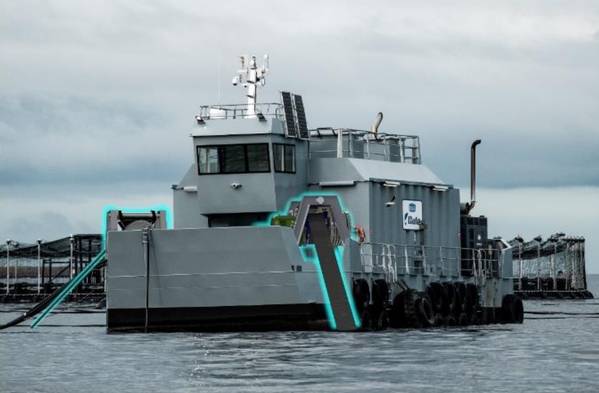
ASX-listed wave energy technology company Carnegie Clean Energy has launched a CETO-derived wave energy product designed for moored vessels, which "offers a solution to the challenge of securing clean and reliable energy for offshore activities, reducing reliance on diesel generation."
CETO is a fully submerged, point absorber-type wave energy technology. A submerged buoy sits a few meters below the surface of the ocean and moves with the ocean’s waves. This orbital motion drives a power take-off (PTO) system that converts this motion into electricity.
The new $3.4m product, called MoorPower Scaled Demonstrator, will be delivered with funding support from the Blue Economy CRC and in close collaboration with a consortium of partners including two of Australia’s largest aquaculture companies, Huon Aquaculture, and Tassal Group.
"The initial target market for MoorPower™ is offshore vessels such as feeding barges for the aquaculture sector, but the future
market is broader and includes the many other offshore operations that require energy," Carnegie said.
Over the next 2 years, Carnegie will design, install and operate a scaled demonstrator of the MoorPower technology just offshore from its headquarters and research facility in North Fremantle, Western Australia.  Carnegie's CETO Technology - Credit: Carnegie
Carnegie's CETO Technology - Credit: Carnegie
The project's academic and industry partners include DNV GL Australia, Advanced Composite Structures Australia, University of Tasmania, Climate KIC/Australian Ocean Energy Group, AMC Search, and the University of Queensland. The project is supported by $1.35m cash from the Blue Economy CRC, $265k cash from Carnegie, and $1.8m of in-kind support from all the project partners.
Carnegie said: "MoorPower was developed by Carnegie with the goal of decarbonizing the energy needs of offshore operations, particularly in aquaculture. As the aquaculture sector moves operations further offshore, operations such as feeding barges will no longer have access to shore-based power and the reliance on diesel generators comes with many associated costs, carbon emissions, and environmental risks, including fuel storage and spillage risks while refueling offshore."
"This challenge presents an opportunity to utilize wave energy, an untapped energy source constantly flowing around offshore facilities. Ocean Energy Europe (OEE) forecasts significant growth for wave energy with a €653b market potential by 2050," Carnegie said.
According to Carnegie, MoorPower can be deployed for any type of moored vessel and is not limited to fish farming. Carnegie’s
vision for the MoorPower™ product is that the technology will be an integrated solution with other offshore renewable energy systems including hydrogen and batteries, the company said.